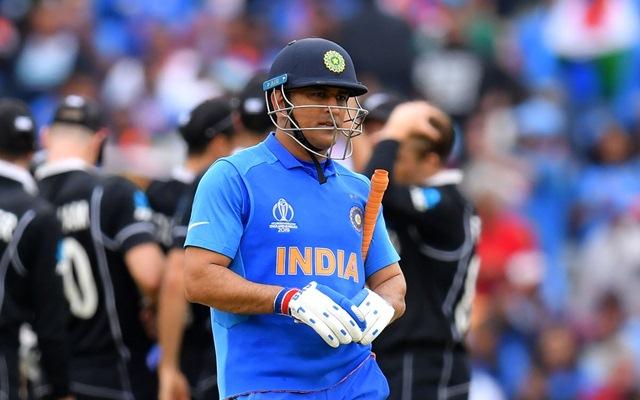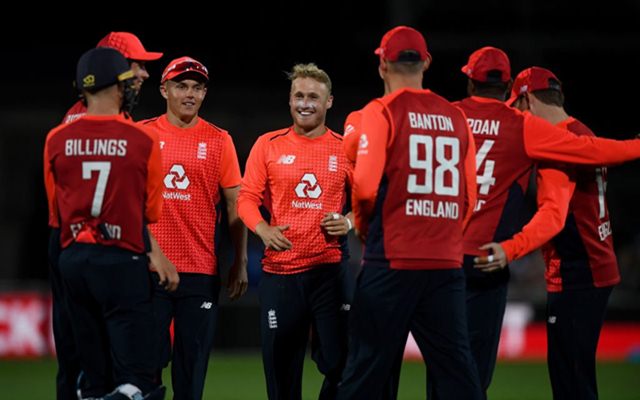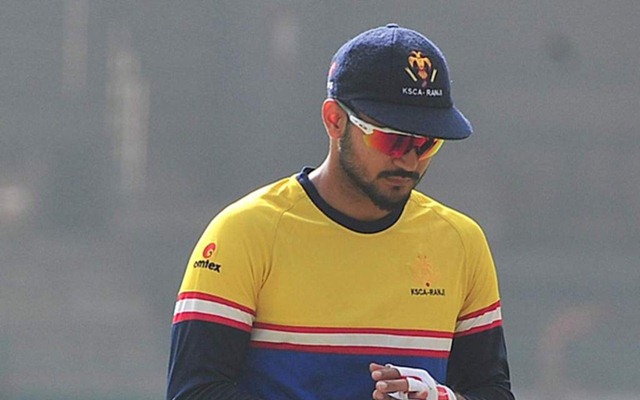Opinion: Why India's constant changes in batting order could cost them another World Cup
India's habit of constantly changing their batting order had caused issues for them in the World Cup 2019 and the habit hasn't changed leading into the T20 World Cup.
View : 3.6K
10 Min Read


![]()
“The [T20] World Cup is in India, so I just want the batting unit to get settled basically. By the time we finish this series, we should know, ‘this is the team which is going to play the World Cup’.” These were the words of Indian batting coach Vikram Rathour ahead of the five-match T20I series against England. Considering the fact, there isn’t any T20I series scheduled so far ahead of the summit tournament, this series was going to lay down an idea on how the Indian team was shaping.
But, even with all of that, the Indian team was looking to win the series. And they did. From being 1-2 down, they came back, winning the last two matches. Add to the fact that England is the no.1 ranked T20I side right now, this win should make Virat Kohli happy. But the question which should be asked is whether the team management actually found their batting order? Vice-captain Rohit Sharma after the series said, “this particular series doesn’t send any signals that this is our perfect eleven. There’s a long way to go.”
Did India try too much during the England series?
Once you start breaking down the series, you would realise that India might have been guilty of trying too much. For example, they tried four different opening combinations during a five-match series, even after the captain said at the beginning of the series that Rohit and KL Rahul will be their preferred choices as openers. That came from Virat just a day ahead of the series, yet 24 hours later, a different combination took the field to open the innings for India.
Shikhar Dhawan looked completely out of touch during the only match he played. He was dropped and a young left-handed batsman was brought in to make his debut. Ishan Kishan’s 32-ball 56 made him a strong contender for the World Cup. Dhawan’s record as an opener in T20Is doesn’t make a good case for him. His numbers are quite poor in comparison to Rahul and Rohit’s in T20I since 2018.
Taking IPL into consideration will make him a firm contender, but batting at the top of the order has a lot to do with the combination, you are playing with. Judging Dhawan’s T20 prowess in one match might not have been the right call, but it is understood that India was trying to keep their options open.
Another twist came when in the last match, the captain decided to open the batting with his deputy. The pair got the best opening stand in the series. Kohli after the match said that he would like to open with Rohit and keep the options open. He also confirmed that he will open the innings in the IPL as well. Both captain and vice-captain also revealed that it was a tactical move to allow Suryakumar Yadav at no.3. This brings us to the middle-order and their age-old problem of shuffling too much.
The mess which led to the 2019 heartbreak
Ahead of the 2019 World Cup, India was guilty of trying too many players in the middle-order and not backing the same players for a longer time. This hurt them badly when it came to the summit tournament. The problem with India’s middle-order is not as simple as it may sound. For some, there might not be a problem at all. But, the continuous chopping and changing don’t help.
The openers along with no. 3 carry India’s batting on their shoulders. Rohit, Dhawan and Kohli are batters who are capable of getting runs on a regular basis. They did it even before the 2019 World Cup and during the tournament as well. But, it all came down to the semi-final. Rahul had made the opening slot his own, in the absence of Dhawan.
Unfortunately, Rahul along with Kohli and Rohit failed together in the semi-final against New Zealand. The middle-order got exposed and failed as well. The reason was clear and quite obvious. Months before the tournament, Ambati Rayudu was set to be the no.4 batsman whom the team management was supposed to back. But, then he was dropped from the World Cup squad, just to accommodate Vijay Shankar, a ‘3D’ player.
Until then, Shankar himself was batting two places down in his state team. By the time, India reached England, Rahul was their no.4. As the tournament started and Dhawan had to pull out, Rahul was shifted to open while Shankar was at no.4. His injury brought in Rishabh Pant straight into the World Cup playing XI, having batted at no. 4 only once before the tournament.
![]()
Then there was Dinesh Karthik, who was slated to be the dedicated finisher but was pushed up the order in the crucial semi-final to be someone who can anchor the innings. In all these cases, there is a pattern. The pattern represents Indian team management’s habit of continuously changing the order. When it comes to winning bilateral series, these changes might even work, but the problem arises when it comes to a knockout game in an ICC event.
The reason why we haven’t repeated 2011’s feat?
The Indian top-order scores heavy runs, not allowing the middle-order to take the centerstage. And when the top order fails, the middle order doesn’t have enough experience of playing in such match situations. Between the two failures of the top-order, the middle order is changed or shuffled. Someone who was coming in at 170 for 2 or 200 for 3 has to come and save a match from 20 for 3. Add to the pressure of a final or a semi-final, you have a perfect recipe for the 2017 Champions Trophy final or the 2019 World Cup semi-final.
The reason why MS Dhoni and Gautam Gambhir were able to make sure that India didn’t collapse in the 2011 World Cup final is simple. They had the experience of playing in that kind of situation. Yuvraj Singh who was in next was a seasoned middle-order batter who had dragged India out of tough situations. With the current Indian set-up, that isn’t the case. There are no fixed spots. There is no pattern to the batting order.
![]()
Shreyas Iyer batted at no.5 and no.6 in this series, behind Rishabh Pant. Although, Pant never comes above Iyer while playing for Delhi Capitals as the right-hander bats at no.3 or no.4, mostly ahead of the wicket-keeper. Kishan opened the innings. Surya was positioned to finish the innings in one match. Virat batted at no.4 in a couple of matches, when he prefers batting in the top order to give himself some time.
Now, the reason why these are problematic calls is that none of these above batters play at that position for their IPL teams. As IPL is a tournament that gives experience to players to get ready for a big stage, it becomes essential for players to practice a similar role in their franchise as they would in the national side.
A great example of it is Manish Pandey, who was playing down the order in the Indian T20I team before he was dropped ahead of the England series, batted ahead of Kane Williamson at no.3 in the Sunrisers Hyderabad team in the 2020 IPL.
How England became a successful white-ball team?

The truth of the matter is when players are batting out of their comfort zones, at times they are going to fail. And no team wants that to happen in the knockout stage. That is one thing which was commendable about England. Even after losing a couple of matches, they didn’t change the batting order. This was also England’s template in the build-up to the World Cup 2019.
Between the 2015 and 2019 World Cups, England stuck to a simple strategy of having one position almost fixed for one batter. While others were tried on that position, the main batter played at least 60% of the time at his dedicated position. That is exactly why Jos Buttler and Ben Stokes were able to drag England back in the final. They had been in similar situations before and managed to do their job to perfection.
![]()
The key difference between a bilateral series and a multi-team tournament

It is quite amazing that the Indian team managed to win the T20I series with so many indifferent batting orders. But, that is where a bilateral series is different from a World Cup. It doesn’t give you an opportunity to reflect back and fix your issues. At the knockout stage, when your top-order fails, you want a batter to be out there, who has an experience of playing at the particular position.
When it comes to India though, after the 2019 World Cup, the team has played 26 completed T20Is. They have won 18 out of them. But, during those wins, the middle order has been shuffled around quite a bit. And some players just get dropped even after doing their bit perfectly. Take, for example, Manish Pandey. Some days he was at no.5, some days no.6. He was there on the Australian tour but didn’t make it to the squad for the England T20Is.
In his last six innings in the format, the Karnataka player averages 122, as he has been dismissed once. That dismissal was in the first T20I in Canberra against Australia, where he scored 2 from 8 balls. It also was his last T20I before getting dropped. However, his scores before that were: 11*, 50*, 14*, 14*, 31*, all batting at no. 5 or no. 6 with a strike rate of 145. Not like he had a bad IPL. He scored 425 runs, yet after one low score, he was dropped.
For now, India’s batting looks strong on the day. They might play a couple of more T20I series before the World Cup. Hopefully, going into the tournament, the Indian team will have a settled line-up with all the players who played in this series. But, there is an IPL, which might again influence selections.
If India doesn’t find a way to keep playing the same batsmen at the same position for a long time, then they could be one batting collapse away from getting knocked out from World Cup once again.
Download Our App